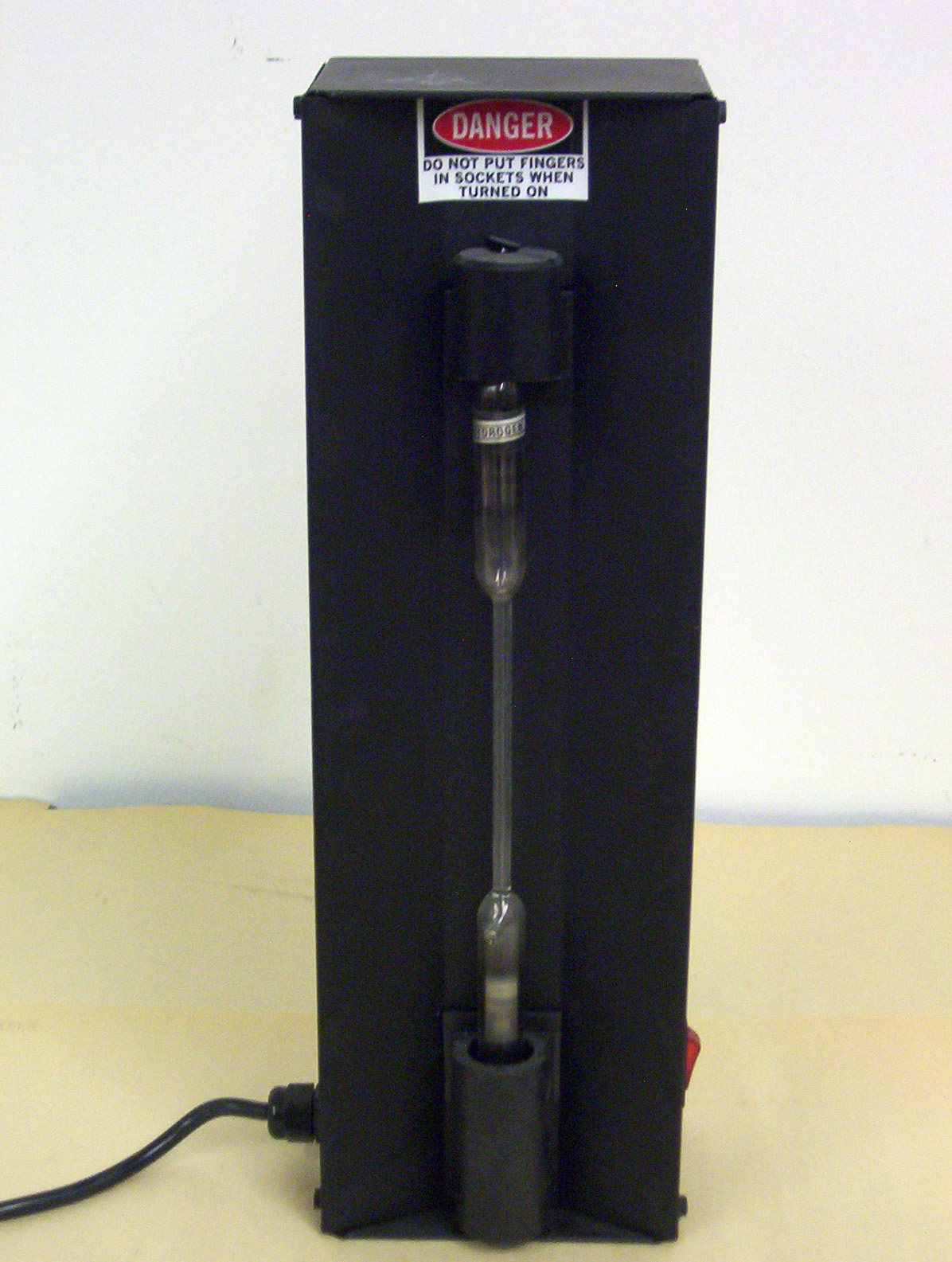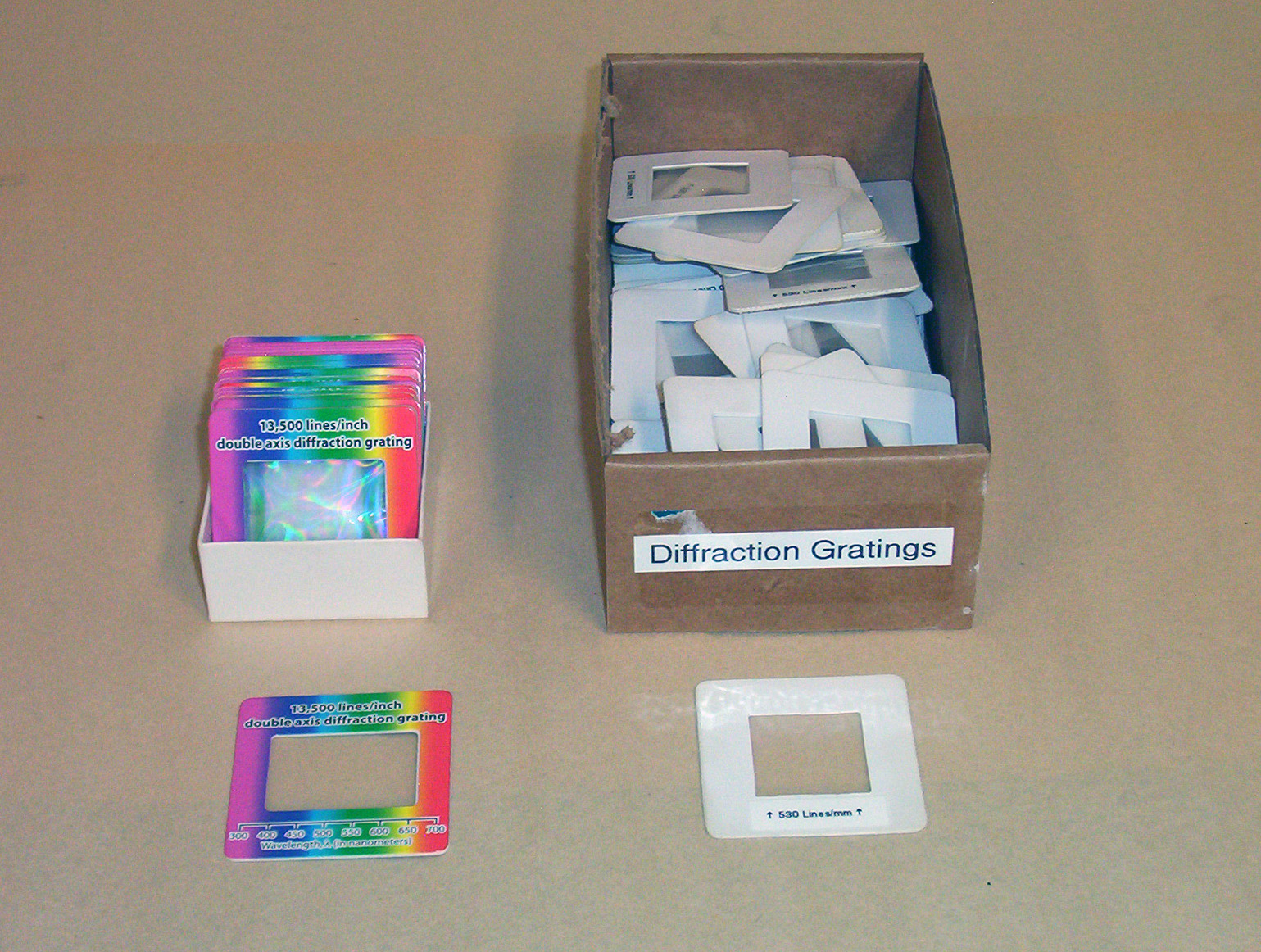Observe the emission spectrum of gases in discharge tubes.
Students can view the emission spectrum from assorted gases. Discharge tubes containing hydrogen, helium and neon are the easiest to show to a large class group, so those are kept in the lecture-demo room. Other gas tubes are available in the non-Major's stockroom. Students will view each spectrum through a 2×2 diffraction grating.
You can also show students a continuum and absorption spectrum using incandescent and Reveal bulbs. Note that if you set these up along one of the narrow benches in the lab, you'll need to use black cloth as a backdrop. This improves the image, since you get too much reflection off the nearby wall.
==================== Physics Classroom ====================
- LDL-B4. The gas tubes (H, He, Ne) should already be mounted within their power supplies. Students will view spectra through the white 2×2 diffraction gratings (found on the same shelf).
===================== Astronomy Lab= ====================
- NMSR-PP2: White light rig, Reveal bulb rig; green spectral tube power supply (for Ar); old style tube power supply (3)
- NMSR-PP4: H, He and Ne gas tubes
- NMSR-KK3: 2×2 diffraction grating
- Jeff's Stash: Black cloth

Gas tube mounted within its loud, buzzy power supply

Boxes of 2×2 diffraction gratings. There are about 50 of the white gratings, far fewer of the colorful gratings. More gratings are available in the non-Major's stockroom.
The white gratings are single-axis with a separation of 530 lines/mm (d = 1887 nm), and will reveal the spectrum of the gas (or sunlight through the windows). Students should hold the grating near their eye, oriented so that they can read the label; that will display the spectrum horizontally.
The colorful gratings are double-axis with a separation of 13,500 lines/inch (d = 1881 nm). The double-axis grating produces a beautiful 'star-burst' spectrum, but it can be distracting and students may not focus on the spectral lines you want them to see.

L-R: Incandescent (white) bulb; Helium; Neon; Argon; Reveal (blue) bulb.
This photo is from the Phys104 Hydrogen Spectrum lab, so hydrogen is not shown in this image